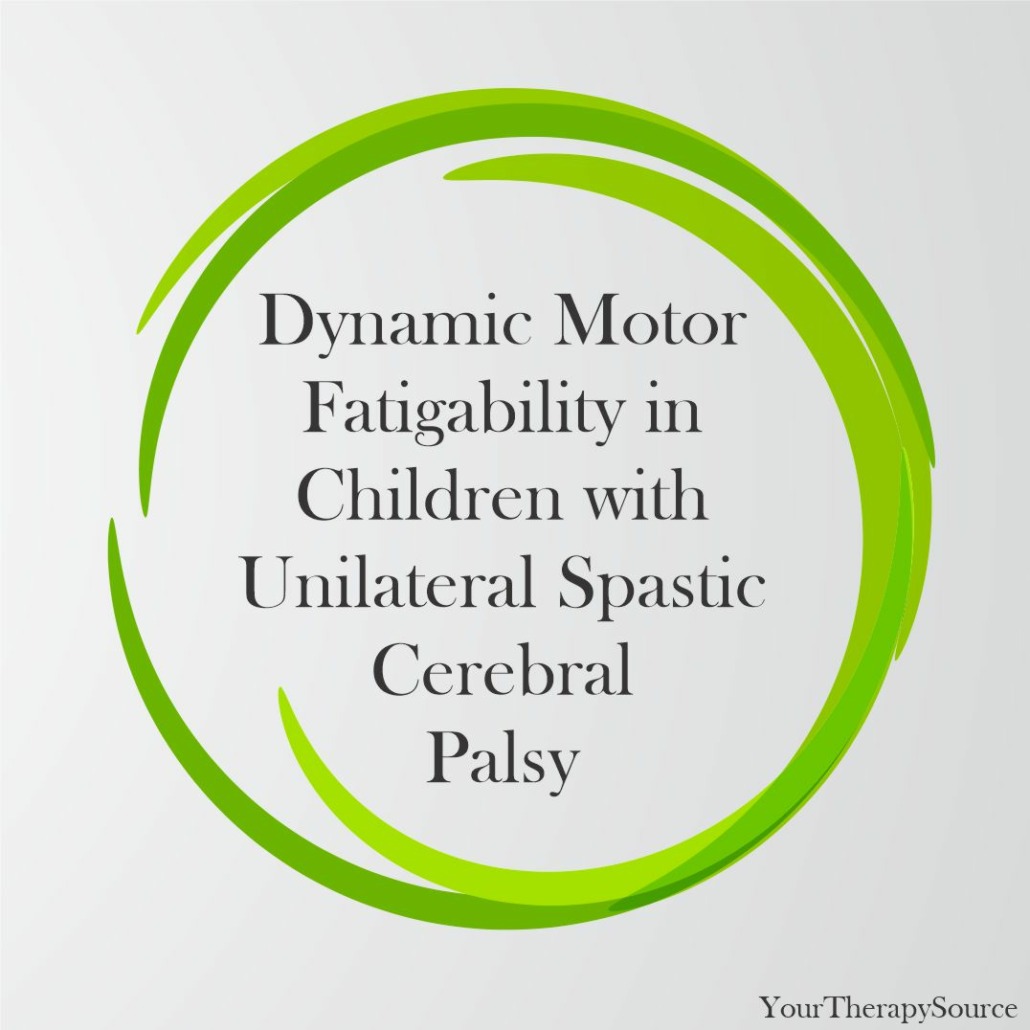Dynamic Motor Fatigability in Children with Unilateral Spastic Cerebral Palsy

A recent research article in the Physical Therapy and Rehabilitation Journal aimed to analyze and discuss the findings of a comprehensive study investigating differences in static and dynamic motor fatigability during grip and pinch tasks. The comparative study focuses on children with unilateral spastic cerebral palsy (USCP) and their typically developing (TD) counterparts. The results obtained from this research carry significant implications for professionals in physical therapy and occupational therapy, particularly those working with pediatric populations affected by cerebral palsy.
Details of the Study
The study involved 53 children with USCP and a matched group of 53 typically developing children, all approximately 11 years old. The participants were instructed to perform grip and pinch tasks, exerting their maximum effort for a duration of 30 seconds. The primary objectives of this study were two-fold:
- Assessing static fatigability, i.e., the rate at which the children’s strength diminished during the 30-second exertion.
- Evaluating dynamic motor fatigability, or how the children’s strength fluctuated when repeatedly performing the tasks.
The researchers employed various metrics to gauge these elements. Static fatigability was calculated through the Static Fatigue Index and the average force ratio from the beginning to the end of the 30-second interval. Dynamic motor fatigability was determined by analyzing the change in average force and the shift in the number of peak force instances throughout the task performance.

Therapeutic Play Activities for Children
Study Results
The results revealed that children with USCP exhibited higher static fatigability than the TD group in both the grip and pinch tasks, irrespective of whether they used their preferred or non-preferred hand. This indicates that their strength tended to wane more rapidly over the 30-second period.
Dynamic motor fatigability, however, presented mixed outcomes. In certain scenarios, typically developing children manifested higher levels of fatigability than those with USCP. This was particularly evident during the grip task using their non-dominant hand and in the frequency of peak force instances with their preferred hand.
Implications for Physical and Occupational Therapy Providers
These findings have substantial implications for physical therapists and occupational therapy providers. They indicate that children with USCP may face more difficulties with tasks requiring prolonged grip or pinch strength, such as holding a pencil, using scissors, or manipulating specific toys.
Armed with this knowledge, therapists can better comprehend the challenges encountered by children with USCP. They can tailor their therapy programs to address these specific areas of difficulty. Interventions may include exercises to bolster grip and pinch strength or the incorporation of adaptive tools to facilitate task performance.
In conclusion, children with USCP exhibit greater static but not necessarily dynamic motor fatigability compared to their typically developing peers. Various factors may contribute to these differences. A nuanced understanding of these disparities can help therapists devise the most effective therapeutic strategies for children with USCP.
Reference
Brauers, L., Smeets, R., Feys, P., Gordon, A. M., Janssen-Potten, Y., Ortibus, E., … & Klingels, K. (2023). Children With Cerebral Palsy Show Higher Static—But Not Higher Dynamic—Motor Fatigability in Grip and Pinch Tasks Than Children With Typical Development Do. Physical Therapy, 103(2), pzac155.


